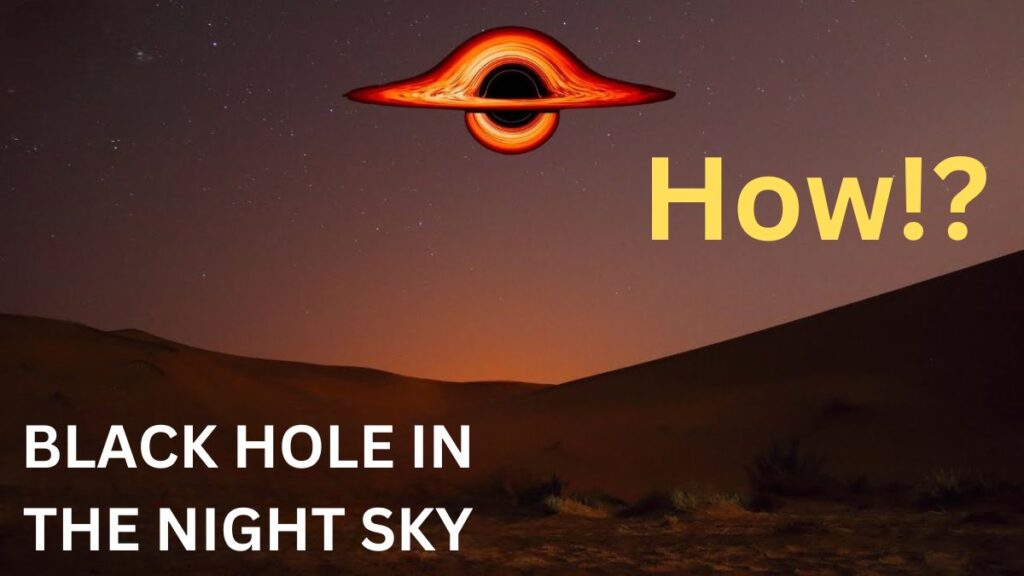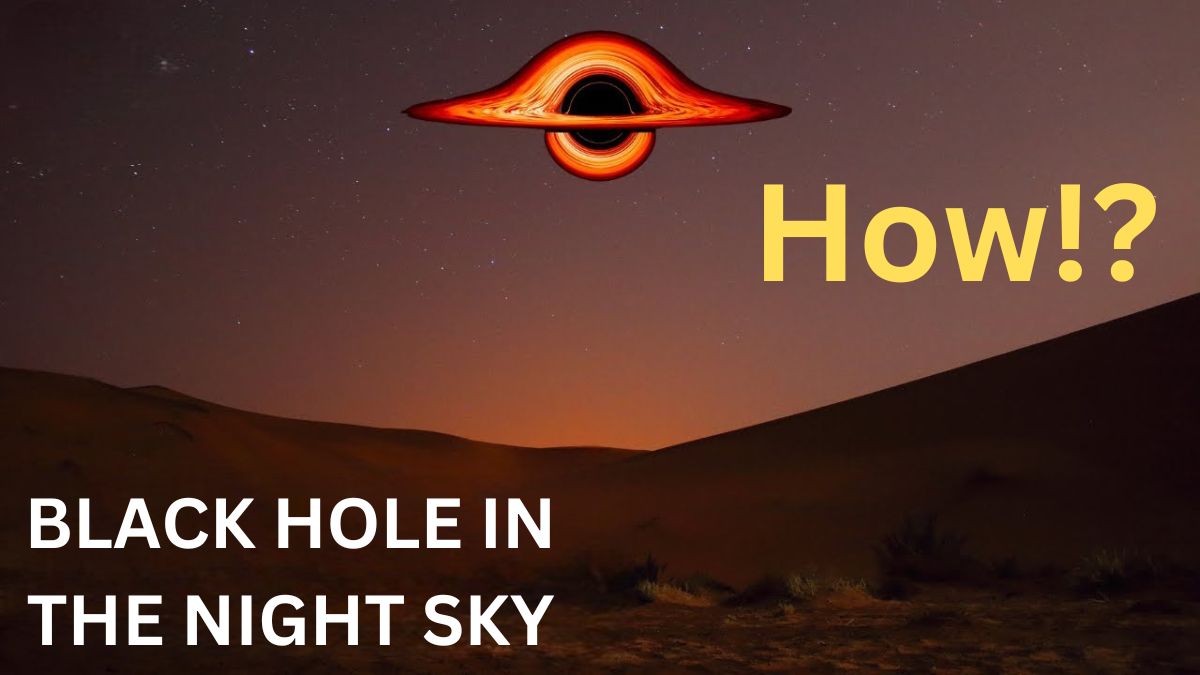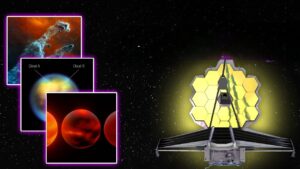
The Zwicky transient facility at Palomar Observatory in California observed an unusual flash of light in the sky on the night of February 11, 2022.
It alerted others to this peculiar source of visible light.
As many as 21 telescopes, including the Hubble space telescope and the NICER X-ray sensor aboard the International Space Station, witnessed this remarkable outburst in a range of wavelengths.
The event was identified as unusual because of its rapid rise and fall in luminosity after being studied for two additional nights.
AT2022cmc is the formal name given by the transient name server after the source was reported by astronomers to it.
They realized they had witnessed an extremely rare cosmic event after analyzing the data and observing this source across the entire electromagnetic spectrum.
A black hole that was devouring a star halfway across the universe produced the bright light.
The stellar “leftovers” jet was propelled in the direction of Earth, creating a dazzling flash of light in the sky.
So, how did scientists know it was a black hole swallowing a star? What transpired shortly after the star was disrupted by the black hole? Last but not least, what made this discovery so significant to astronomy?
When we look at the night sky, we see that the universe is not as still as it appears.
It has a history of violence.
Black holes consume anything that gets too close to them, and stars either die or collide with one another.
These and other occurrences are referred to as transients by astronomers because they emit flashes of light in the night sky.
A tidal disruption event (TDE) happens when supermassive black holes at the centers of galaxies damage a nearby star by generating bursts of electromagnetic radiation.
The tidal force of the black hole’s gravitational pull tears the star apart violently.
That is comparable, to the way the moon pulls tides on Earth with a larger force.
The components of the star are then trapped in a fast-spinning disk that circles the black hole.
Finally, the doomed star in the disk is consumed by the black hole.
Studying how supermassive black holes cause any object too close to them to be disrupted by such dynamic events opens up new opportunities.
Because the Zwicky transient facility has one of the most extensive transient surveys, astronomers regularly search for such occurrences in sky surveys.
When AT2022cmc was found, astronomers initially analyzed the source over the full electromagnetic spectrum.
This was one of the brightest x-ray, radio, and sub-millimeter sources ever discovered.
The event’s optical and ultraviolet light curves can be seen here. The apparent magnitude and the x-axis represent the time since the initial detection in days.
In astronomy, the brighter an object is, the smaller its magnitude.
For approximately four days following the discovery, astronomers observed a red color and a dramatic rise and fall.
The color then became more blue as the evolution slowed down.
AT2022cmc was extremely unusual due to its extraordinary luminosity across the electromagnetic spectrum and its rapid evolution over just a few days.
Every night, about 100 energetic transients have been discovered by astronomers, but none of them have such unique properties.
The light curve provided the answer to their question regarding the bright flash of light.
The team compared AT2022cmc to three known transient classes that have radio and x-ray counterparts and exhibit rapid optical variability in their papers: luminous fast blue optical transients, also known as LFBOTs, gamma-ray bursts, and kilonovas.
What is a Kilonova?
Kilonovas are brief astronomical explosions that occur when two neutron stars or a black hole and a neutron star combine.
Numerous chemical elements heavier than iron are produced by these events.
The main neutron star consolidation was distinguished in 2017, and the underlying tone and quick development of the light bend of the two occasions looked like one another.
However, there were two main distinctions.
First, due to the low ejecta masses anticipated, kilonovas are anticipated to have a luminosity that is orders of magnitude lower than at 2022cmc.
Additionally, this transient evolved from red to blue, whereas kilonova models evolve from blue to red as the synthesized elements are produced.
Then, this event was compared to the typical lfbot or luminous fast blue optical transient.
Also, the formation of a black hole is likely connected to this poorly understood class.
The two events’ x-ray and radio counterparts shared similarities.
However, astronomers discovered two crucial differences once more.
AT2022cmc was significantly redder than ordinary IFBOTs.
Additionally, no known IFBOTs have a blue component that lasts for an extended period of time.
This scenario was strongly disfavored by these properties.
Finally, the cosmic event was compared to a typical gamma-ray burst (GRB) by astronomers.
The rapid decline, red color, and high luminosity all pointed to a gamma-ray burst as the cause.
However, the only difference was that while x-ray emission was variable, radio and submillimeter emissions were long-lived.
The signal remained 100 times stronger than any gamma-ray burst afterglow previously observed.
AT2022cmc is not even a gamma-ray burst, as these points suggest.
Therefore, a relativistic jet formed by a tidal disruption event is the only possibility that matches all of the observed characteristics.
The unfortunate star’s near-parabolic approach to the supermassive black hole resulted in its destruction by a gaseous debris stream, which set off the occurrence.
At the self-crossing point, a significant portion of the mass remained close to the black hole and produced powerful shocks.
The shocked gas then moved around the black hole, creating an accretion disk and two relativistic jets due to the black hole’s rapid spin.
At a redshift of one, the event took place 19 light years or 8 billion light years away.
AT2022cmc is now the farthest jetted tidal disruption event ever discovered.
Astronomers estimated that the black hole consumes approximately half the sun’s mass annually due to its brightness.
Because the event was brought about by the tidal disruption of a star by the supermassive black hole at the center of the galaxy, the transient position ought to coincide with the nucleus of the host galaxy if it is discovered by the James Webb Space Telescope.
This event is truly unique due to three significant factors.
First, it had relativistic planes in which particles advance quickly to 99 percent of a second.
Jets are produced by only 1% of tidal disruption events.
The second is that the plane was pointed directly at us.
Last but not least, this was the first time that was immediately detectable in optical wavelengths.
Over a decade ago, such an event occurred, but optical wavelengths were unavailable for its observation.
As a result, the night sky now has a glimpse of a black hole in optical wavelengths for the first time ever.
The endless occasion could open up a better approach for identifying these stream-terminating tides across the limitlessness of room, consequently considering the more profound investigation of these intriguing occasions and the dark openings that trigger them.
If you enjoyed this story, please consider exploring more stories given below.
Explore:







